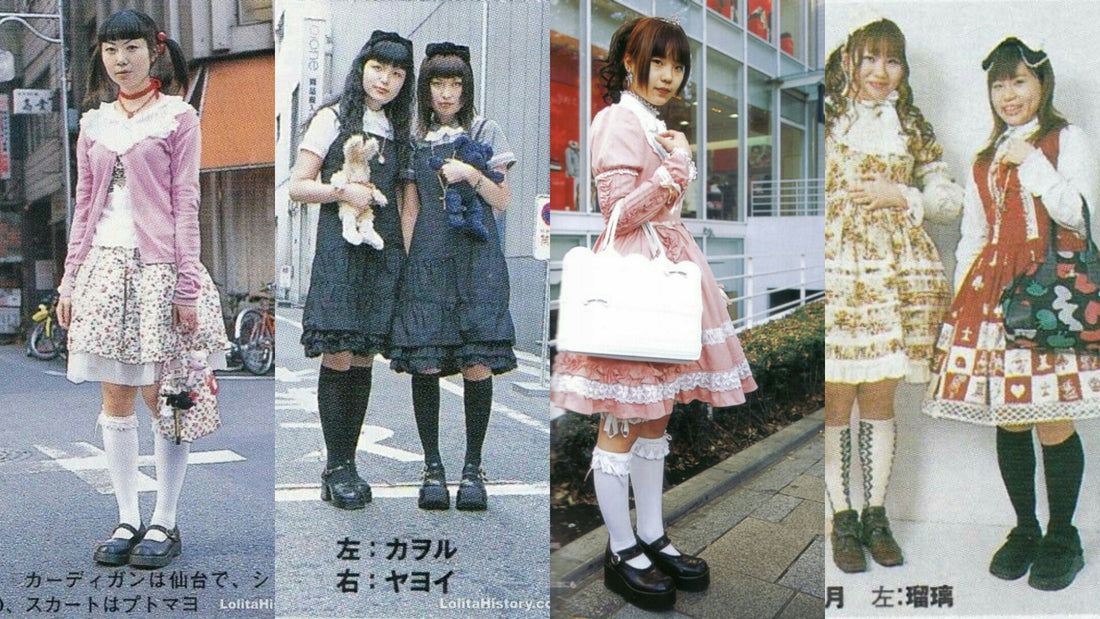
‘Oh no! It’s the Outfit Police!’: Constructive Criticism Perfection vs Imperfect Authenticity
Katherine RoseShare
Written by Lucy May
(Disclaimer: This is an opinion piece, and therefore understandably may not be something all readers will 100% agree with)

I think modern lolita fashion rules turned this fashion perfect. Perfectly rotten. I’m a bit salty about it, sometimes, to be honest.
There, I said it.
I really don’t mean to offend or unnerve at all. But hear me out here, people…hear me out.
There, I said it.
I really don’t mean to offend or unnerve at all. But hear me out here, people…hear me out.
In the beginning, there was just you, and your love of this fashion…
Do you remember what it felt like when you first discovered EGL fashion? I think we all do. It’s like finding out that magic really does exist. For many, it’s a story of finally finding a fashion to express the way they felt inside their soul. That’s the story we love to hear; people connecting to their inner selves and a rebellious spirit through dressing in frills. A way of dressing apparently so removed from the rules presented by mainstream and fast fashion, so radically different from that of your parents, family or society at large, starkly in contrast to conformist social dress norms.
But in the modern lolita world, is it really as simple as all that? As we know…it really isn’t as simple. It’s a new can of fashion worms to sift through. I invite you, dear reader, to consider your own frilly journey.
Then, everyone started telling you how to dress, all over again…
Upon expressing an interest in EGL fashion (especially if you are a Western lolita), you very quickly pick up on the consensus that, as a newbie, you require a consultation with and to receive advice from seasoned wearers of the fashion. At that point, it becomes apparent that there seem to be a million rules to follow in order to successfully execute your first outfit. Still, most newbie lolitas enter into the fashion with the ‘make do’ attitude of using what they have or what they can find readily available to put together an outfit that might be considered acceptably lolita. This is, unfortunately, quickly squashed out of newbies, as their ideas are often quickly labelled ‘ita’ (a word no lolita, no matter how new to the fashion, wants to be associated with).
Once you gain the confidence to wear your first outfit, the next logical step is usually to get opinions from others in the fashion around you. It’s then that you discover that 1) your first outfit was, apparently, all wrong, and 2) there is simply too much choice. In recent years, the fashion has become exponentially more available to a Western market through both first hand and second hand online shopping opportunities. Whether you first browse on Closet Child, Wunderwelt, Bodyline, Taobao, direct from brand store or someplace else, or simply scroll through lolibrary or pinterest for inspiration, the chances are you will be overwhelmed by all the colourways, patterns and style options. It can throw who you thought you were, what you thought your personal taste and style were, right out of kilter. It’s a bit like a sweetshop – all these design concepts, cuts, impactful silhouettes, themes, colours, ribbons, bows, bells and whistles (well, maybe not whistles) - there is undoubted going to be an attraction to all these wonderful designs, and a want to spend all your money, all at once. Owing to this, and the myriad of rules, it is likely that you will make many buying mistakes when you first venture into this fashion. You’ll cry, your bank account will cry.
Yet, with all this variety available to the lolita of the year 2020, there is a desperate and seemly fundamental need for everything to just be perfect. To match. To coordinate. And of course, coordination always equals well-dressed, right?
According to modern standards of constructive criticism:
1) Colours and themes must match (must have the right socks, shoes, headdress, bag, accessories ALL matching or coordinated perfectly)
2) The style must be clear cut (though a blend between styles can be executed by more experienced lolitas)
3) An outfit must have a cupcake poof or at the very least a very voluminous a-line shape to be considered truly lolita.
This doesn’t seem to leave a lot of room for creative agency…but maybe I’m wrong? For some, this perfectionism is a power in itself. A power to feel in control of something when everything else seems hopelessly in disarray. I can see where they are coming from. It’s just that when I personally was trying to tick all these boxes at the start of my lolita journey, the magic felt pretend and I worried that it had never actually been really there to begin with. It wasn’t until I turned to the oldschool revival that my soul felt aligned to this fashion, and I felt free to express myself through the imperfect rebellion against the mainstream AND the current trends in EGL it provided…
But how did we get so far from the original look of EGL? I mean, it has been over 20 (and maybe even as long as 30) years since this fashion began to emerge.
Why? How?
Perhaps it’s a mixture between the way constructive criticism has interacted and met with the standards that lolita brands now tend to set with their marketing campaigns, and what soon became the norm in the late 2010s in street snaps. In earlier issues of Gothic and Lolita Bible, there was a bigger focus on genuine creative agency through use of flat-lay display of products, and therefore a subjective viewpoint from which a reader could imagine and fanaticise their own personal aesthetic within those items of clothing. The streetsnaps at the back of the GLB, in KERA and in Fruits mook reflected this authenticity and imperfect but creative sense of stylistic rebellion. There was a sense that this fashion was a daily occurrence for its wearers. Something normal, casual: part of a lifestyle. Conversely, in more contemporary copies of the GLB, we see a larger focus on the troupes we are used to in the West of brand campaigning (perhaps because Japanese designers recognise that EGL is something becoming more and more accessible to a Western audience). Models are perfectly dressed in coordinates that are set matched, with perfectly styled wigs etc. Not to mention the more severe issues of lack of representation of racial/cultural/disability/body type diversity within GLB models (which was always an issue anyway).
Street snaps too became rather theatrical and performative in their extravagance, making the fashion too intimidating and inaccessible, and in many ways, impersonal (for many of us, at least). Not relatable.
Re-Rebellion…
Maybe that is why we have seen such a revival in oldschool lolita in recent years, and why there seems to be such a wonderful diversity of individuals who wear and engage specifically oldschool lolita fashion. Or maybe it’s because we are just a little sick of looking at the same three outfits again and again on certain style-sharing platforms. It’s like a re-rebellion. A chance to take back everything that this fashion used to stand for. The freedom, and the revolution.
And with that, the magic returns. As an oldschool wearer, I myself rarely, if ever, reach out for constructive criticism on my outfits. Rather than get ‘permission’ or any kind of confirmation of perfection, I have chosen to wear the clothes I have acquired in a way that feels right for my personal raison d’etre. Gobelin with stripes? Heck yeah! A sight for sore eyes? Probably! It doesn’t matter what anyone else thinks: I feel like me wearing it! And isn’t that why, in the first place, I first fell in love with lolita fashion? Heck yeah, it is!

8 comments
Despite loving the rules of the fashion and believing that they do contribute to a healthy substyle (within moderation), I really sympathise with the writer here. However I also wonder if its part of a larger trend we’re seeing in social media were if we want to be seen as valid and worthy of attention, then we have to essentially put on a very skilled expensive show. Make up gurus have said similar things in the past about the quality of make up applications. We craft our lives into a spectacle to be judged rather than lived. So maybe the cure is to act as if nobody is watching…
I so get this! I’ve stopped reaching out for concrit because I feel like I know the best for myself and what makes me happy. 💖
I totally feel this. I started lolita around 2008, when things were shifting into OTT sweet – and that, I think, was the beginning of what you’re talking about here.
When I was pining to start, I was looking at the older, soon almost forgotten street snaps and oldschool styles. There’s something liberating about them, something I think did attract most of us to it.